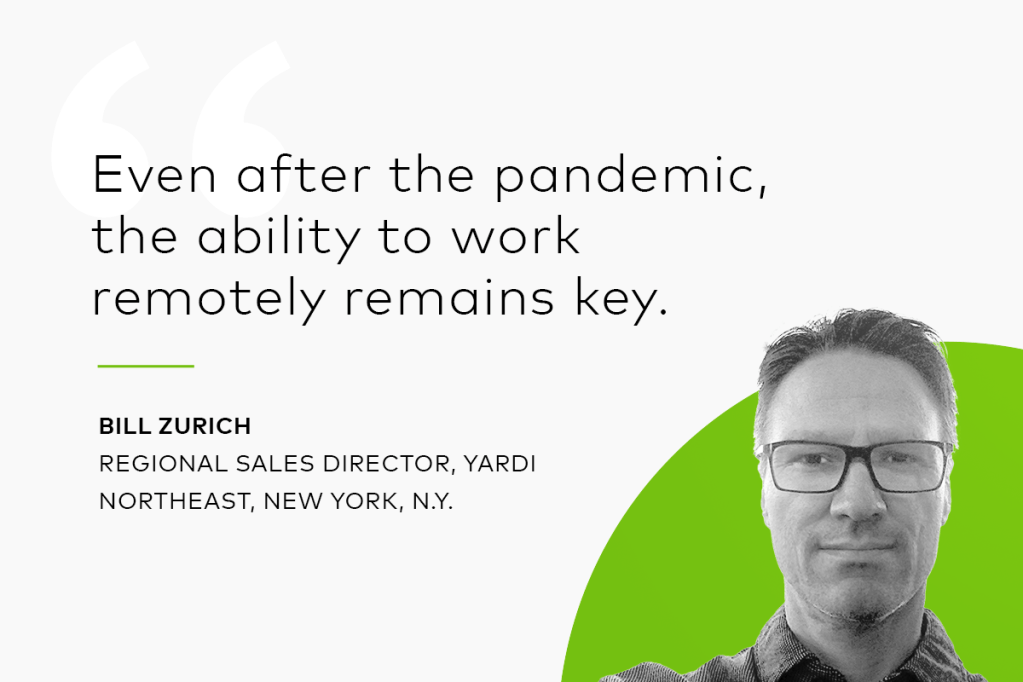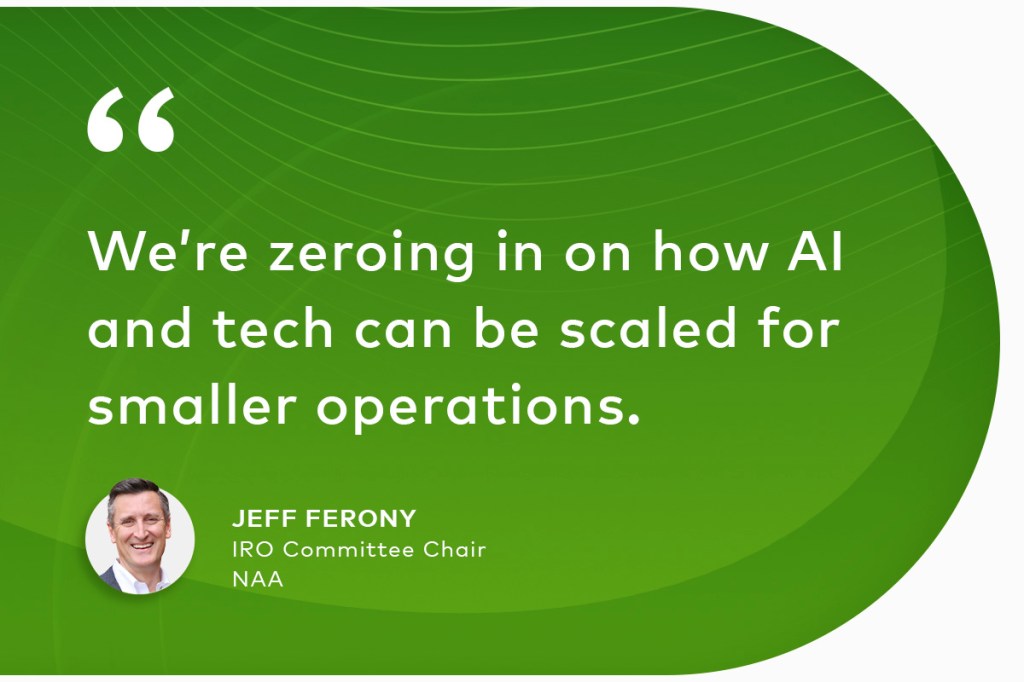By Bill Zurich, Yardi Regional Sales Director, Northeast, New York, N.Y.
Want to hear something funny? Here goes: New York is still a challenging place to do real estate.
Did I say funny? I guess I meant obvious, irritating and sometimes downright bonkers. And it’s not getting any easier as far as new regulations are concerned.
Jokes aside, I know what this industry is going through right now. I have 2,500 clients in my region alone. Like many of us, they moved employees to work from home and tried to reduce in-person contact with vendors and tenants by introducing paperless transactions. And they’re all dealing with the financial realities of the economic downturn.
I’m glad you’ve read this far, because I have good news — and lots of it. The right technology can not only help your business navigate COVID-19 but set you up for success post-pandemic. I’ll explain.

Leverage tools that let you work from anywhere
Even after the pandemic, the ability to work remotely remains key. Software and technology allow you to do that. That’s why I recommend Yardi Breeze and Yardi Breeze Premier, property management software that safely stores all your properties’ information in the cloud, allowing employees to securely access everything they need through a web browser from their desktop, laptop, tablet or mobile phone. And to protect sensitive data, managers can set up role-specific controls. Our products let you do everything you need to do to run your business digitally.
For our residential clients, we added a deferment feature to help streamline and automate the repayment plan you come up with. Further, virtual apartment tours were a trending topic before the coronavirus, but they’re a huge deal now, and they’re going to be a huge deal going forward.
Take advantage of paperless transactions
For some reason, the commercial real estate industry has been slow to adopt some easy-to-implement features (such as electronic payment processing). Many businesses are still processing paper invoices and check payments. Someone is likely still going to the property management office a few times a week to pick up the mail or drop off physical checks in the mailbox. The right tools let you do all of that electronically, even collect and process tenants’ rent.
We have had a lot of success converting manually processed paper transactions (applications, lease execution, invoice processing, check printing and processing rent payments by check) to completely digital.
Renters can find a unit, apply, get screened, execute their lease agreement and sign up for renters insurance, all online. Tenants can pay rent via ACH, debit or credit card. They can enter work requests and renew their leases. And again, this is all done online. Plus, vendor invoices can be routed for approval, then paid electronically by ACH or virtual credit card.
Get covered with state-specific requirements
We constantly keep up to date with region-specific requirements in New York. For instance, we have New York specific functionality in Yardi Breeze Premier that provides the tracking and reporting required by the New York State Division of Housing and Community Renewal. Here are a few highlights:
- Get legal rent calculation and tracking
- Process vacancy and renewal increases for stabilized units in compliance with rent laws (The Acts) and guidelines
- Generate annual rent registrations electronically for submission directly to DHCR’s ARRO website.
- Process SCRIE subsidy activity
- Maintain records for compliance with health regulations regarding lead paint, window guards, stove knob covers, fire safety and bedbugs
Use data to manage risk & revenue
I’ve spent the last year talking to clients about how they’re handling their business, and two things stick out: risk management and revenue streams are top-of-mind for virtually everybody.
Understanding tenant risk across a portfolio has never been more challenging. Slicing and dicing data based on asset types, locations and tenant attributes has provided deep insights and enabled our clients to measure, monitor and manage their greatest risks.
Many companies are months behind in receivables, with rent abatement requests and overdue rents piling up. But our clients have used the tools they already had to ensure their revenue streams continue to flow. My clients can even set up rent deferments or payment plans for tenants. This has been an extremely popular and important feature during the pandemic.
Get started sooner rather than later
I’m going to end with some bad news/good news. The bad news is that if you’re working on a subpar software system or are still using basic spreadsheets, you’re probably leaving money on the table. That money comes from all over the place, in the form of overall efficiency, better data, timesaving applications, cost management, etc.
The good news is that getting set up on today’s modern property management software only takes days or weeks. All property managers, investors and owners should take 15 minutes today to take a look at what’s out there. Or just ask me! I promise you won’t regret it.
This article was originally published in the New York Real Estate Journal. Some parts have been edited or condensed for clarity.



